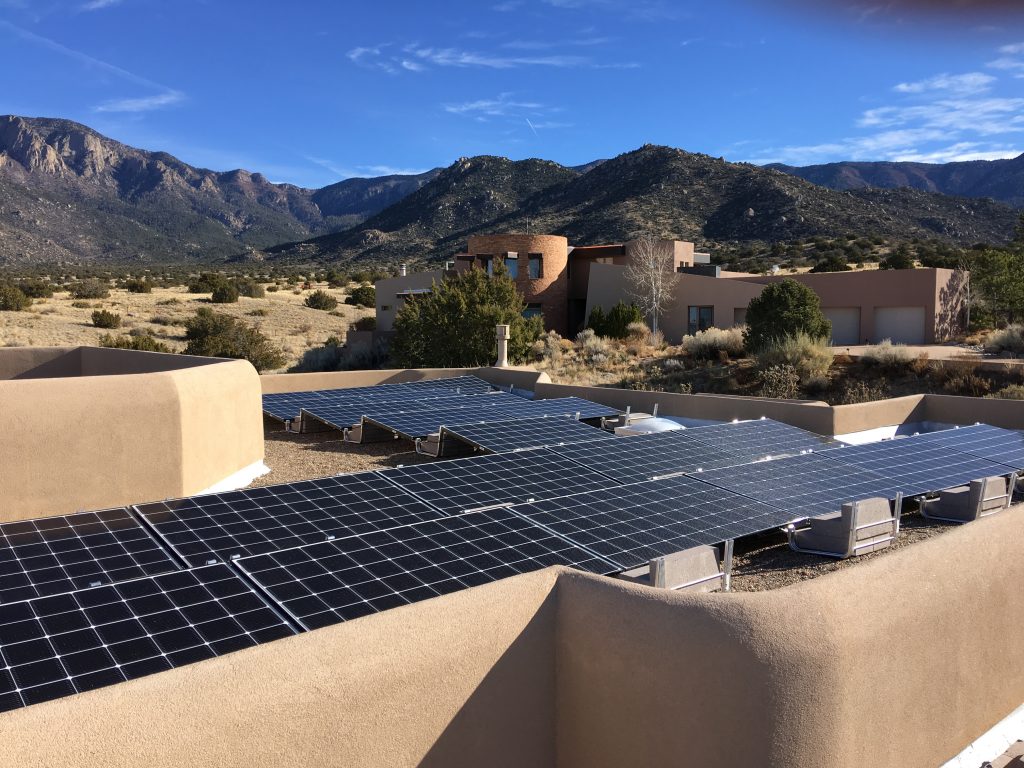
Residential solar can help reduce your electricity bills — or even eliminate them. But, how many solar panels do you need to power your home to achieve that zero bill? This is one of the most frequently asked questions we hear from our customers. There’s no one-size-fits-all solution to home solar installation. Here, we’ll walk you through the steps to cover 100% of your home energy needs with solar.
On average, American homes need 14 to 36 solar panels. However, your particular solar needs depend on several factors, including your household’s energy usage, the orientation and usable surface area of your roof, the climate and peak sunlight in your area, the type of photovoltaic (PV) panels you’re thinking of installing, and whether net metering is available. Let’s look at each of these in turn.
Solar Energy Factors that Determine Household Energy Usage
Calculating Usage
Your household energy usage doesn’t necessarily depend on the size of your dwelling; it depends on what you’re doing in it. Someone with a 4,000-square-foot house may need fewer solar panels than someone with a 2,000-square-foot abode. If you have a big-screen TV running 24/7 in every room, work from home, and charge an electric vehicle, that usage is going to add up.
New Mexico Home Energy Average Usage
To find your current usage, look at your electricity bill. Your usage may be expressed as a number of kilowatts (kW) or kilowatt-hours (kWh), in other words, how much energy is consumed over a period of time. In 2018, New Mexico residential customers used an average of 7,668 kWh per year, according to the U.S. Energy Information Administration. However, you’ll want daily usage in hand to inform your solar array planning, so just divide your yearly or monthly usage to get to daily use. You’ll need your solar system to produce this output to cover 100% of your energy needs. Because solar systems don’t operate at the optimum output at all times, consider adding a 10% cushion to your tabulations.
Rooftop Space
To cover 100% of your energy usage, you’ll need to ensure you have enough rooftop space for your array (or collection of solar panels). Average American homes need 227 square feet of rooftop space for solar panels to accommodate their needs. The direction of your roof also affects output, and thus how big the array might need to be. Southern facing roofs are more desirable for solar output; however, homeowners with roofs facing other directions are able to achieve good results with solar. Other factors can also affect output, such as the roof pitch, and the presence of any objects that might interfere with the panels, such as a large shade tree.
Climate and Peak Sunlight Hours
With more than 280 days a year of sunshine, New Mexicans have the inside track on solar output. The number of peak sunlight hours also directly affects how much energy your solar array produces. Because of its favored location in the country’s sunbelt, New Mexico receives nearly seven hours of peak sunlight a day, compared to the average elsewhere in the U.S. Albuquerque, for example, received 6.77 hours of peak sunlight.
Types of Solar Panels
Solar technology continues to advance and become more efficient. However, not all solar panels are created equal. Photovoltaic (PV) solar panels, which are the variety commonly used in home installations, come in a variety of wattages, from 280 to 420. They also vary in panel size, cell technology, and efficiency, in other words how well the panel converts sunlight into electricity. More efficient cells will produce more wattage, and you’ll need fewer of them in your array to power all of your energy needs.
Net Metering
You should also consider whether your utility offers net metering. Your residential solar system is likely to generate more electricity than you use during daylight hours. During this time, homeowners can send energy back into the energy grid. Other times, such as at night or during cloudy days, they may need to draw from the grid to supplement their solar array’s production. Under net metering, customers are only billed for their “net” energy use, in other words, the difference between the energy they produced and the energy they consumed.
Timing – When does it start to pay off?
After the planning phase to determine the right size and design of a solar array for your home, physical installation begins. While the length of time varies based on design, property layout, and individual needs, most residential systems only take a week to install. Many customers begin to enjoy big breaks on their electricity bills in as little as two months after installation. If you’re using solar for water heating, you can expect to see your gas bill drop, too.
Rio Rancho Solar Contractor
Even if you can’t cover 100% of your solar usage, it may still make sense to you to move forward with installing solar. This is particularly true if your goals include more than cutting energy costs and are more interested in minimizing your carbon footprint. Federal and state tax credits may still be available even if you aren’t offsetting all your usage.
Of course, the best way to determine your needs is to discuss them with a solar installer. Get in touch with us for an initial consultation to get the conversation started.
